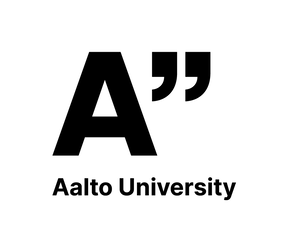Guidance for the use of artificial intelligence in teaching and learning at Aalto University

The Guidance was approved by decision of the Vice President and entered into effect on 1 August 2023. Item 4 updated by the Vice-President's decision on 13 May 2025.
Advanced language models, such as ChatGPT and other models that generate images, videos, and audio, have reached a level where their produced content can be difficult to distinguish from human-generated content. Software and services based on artificial intelligence are expected to continue to develop and increase in the future, and so their use should also be considered in teaching and research. In this text, the term artificial intelligence refers to software and services that utilise AI, of which currently the best-known examples include ChatGPT, DeepL, Dall-e, Bard, Midjourney, and grammar aids used in text processing software.
The existing rules and regulations related to ethics and rules of conduct in studying and teaching as well as requirements regarding the processing of personal data, data privacy, and cybersecurity are general rules and principles that should be considered when utilizing artificial intelligence in studying and teaching.
Artificial intelligence is a tool that is useful to master, and therefore, prohibiting the use of AI as an aid in content production is not generally advisable.
- The use of AI-based technologies is allowed as a support for teaching and learning unless instructed otherwise by the teacher of the course. The teacher of the course may decide on restrictions on the use of technology on a course- or task-specific basis if achieving the learning objectives of the course requires it.
- If the teacher decides to restrict the use of AI on a course- or task-specific basis, they must provide clear instructions on the limitations in connection with the assessment criteria and time the guidance so that the student has the possibility to complete the task as instructed. The teacher may ask the student to describe how AI has been used in the learning task.
- The teacher cannot require the student to create an account in systems that have not been subjected to Aalto University's security check. When designing their course, the teacher must ensure that students are not put in an unequal position. This implies that the teacher cannot require the student to purchase licenses for systems.
- The teacher may only submit student work or require students themselves to submit student work in systems approved by Aalto University, among other things, for copyright and privacy reasons. The official AI services provided by Aalto University can be found at https://www.aalto.fi/en/services/ai-services.
- The student is always responsible for the content of their submitted work. For example, language models can be used for formatting or ideation of the text produced, unless otherwise instructed by the teacher. However, AI-generated text cannot be presented as is as the student's own written response. The student is obligated to follow academic writing practices. Upon the teacher's request, the student is obligated to describe how, what and/or why AI-based technology has been used to do the learning task.
- Utilising AI in a learning task contrary to the teacher's instructions will be considered cheating and will be handled in accordance with the current procedures.
- Situations where the use of language models is not allowed: maturity test.






